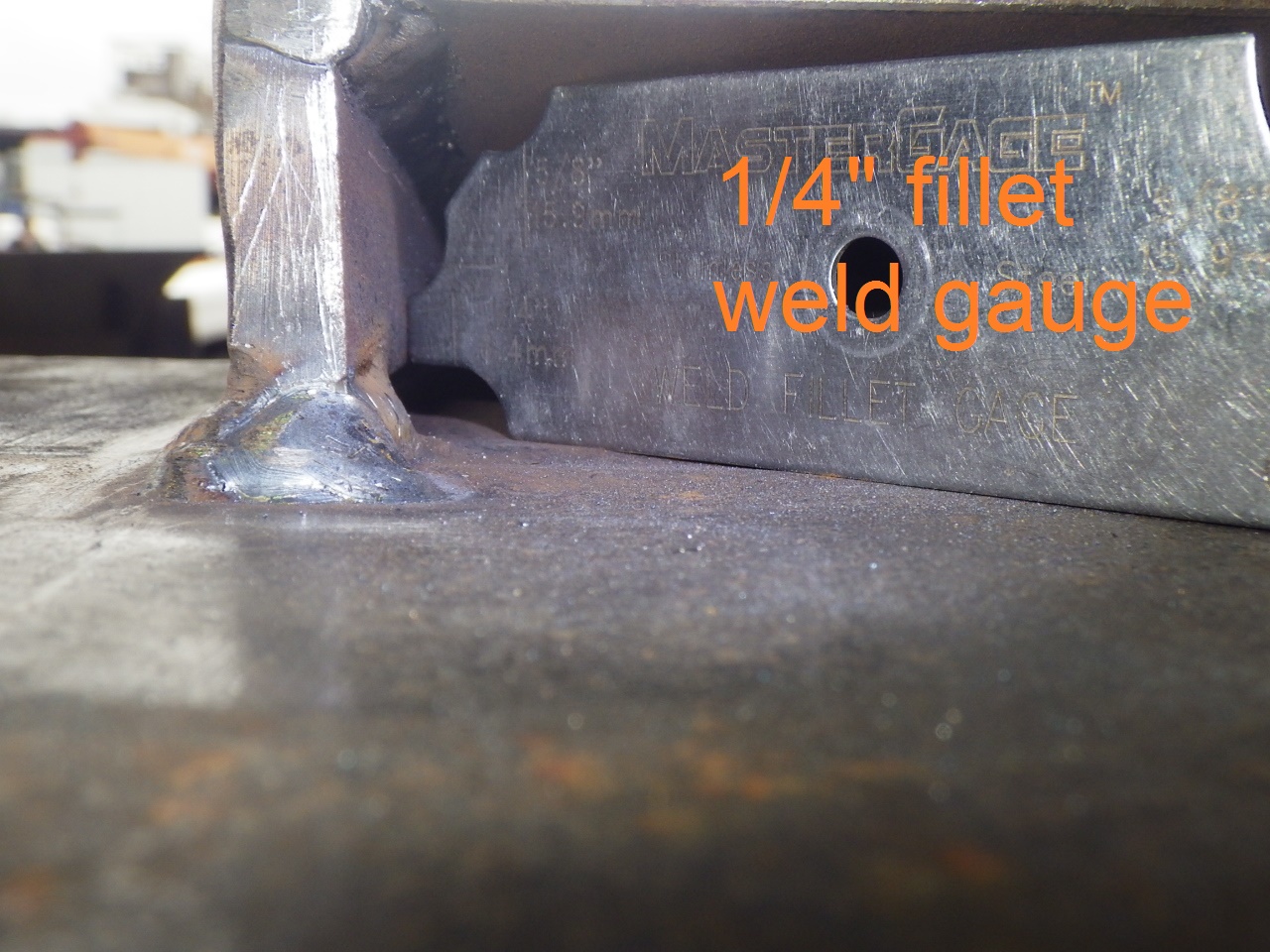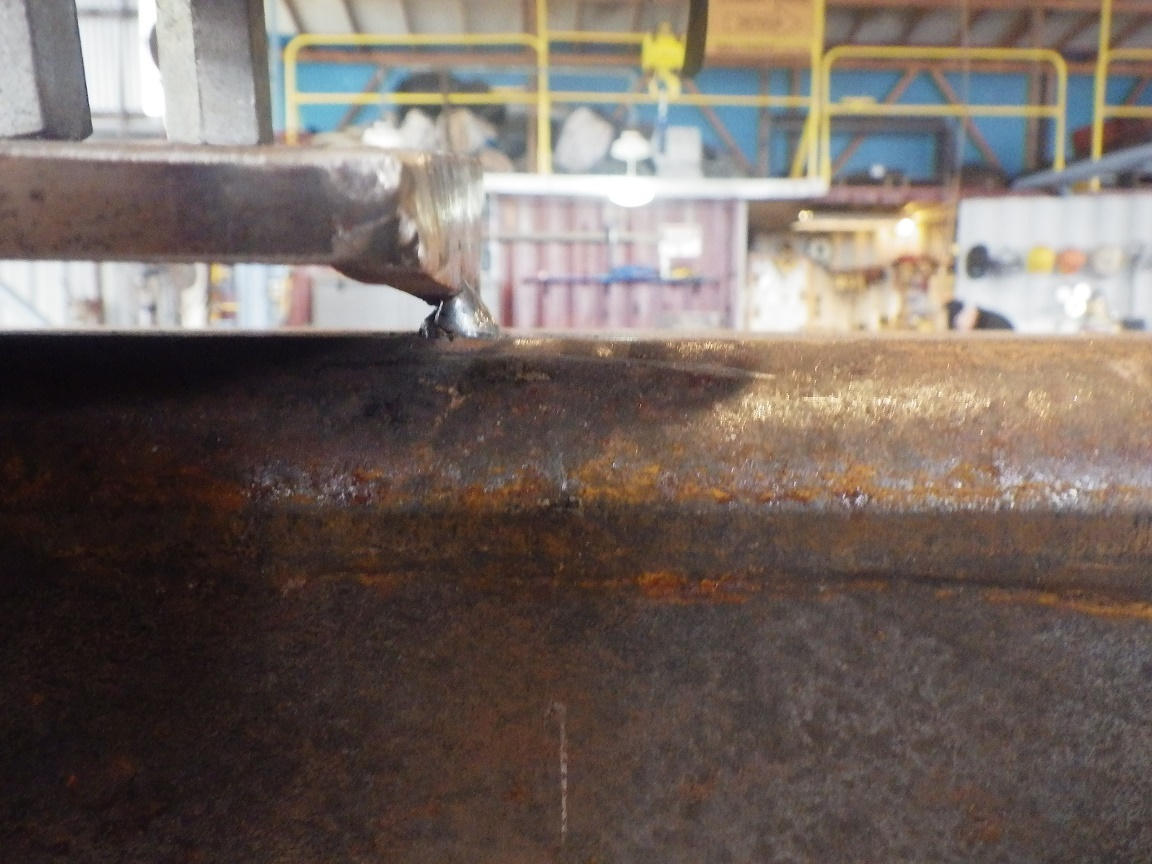Not logged inAmerican Welding Society Forum
Hi Gregg
Welcome to the forum.
While I don't think there is a prohibition to the word "approximate" I don't see how it could add value to a WPS.
One of the main reasons for the Welding Procedure Specification (WPS) is to make a document that helps the welder do his job, while at the same time offering process control via the engineer to ensure quality and consistency.
My "opinion" is that rather than using terms like "approximately" on a WPS, the engineer should provide ranges to the welder to stay within. Current, voltage, preheat, inter-pass temps, electrode extension, travel speed etc.
These ranges should be only wide enough to offer the welder what he needs to do the job. Not so wide that a bad combination of ranges can produce a non-conformance. This might mean making several WPS's where in the past only one existed.
Craftsmanship should extend to and be expected of the WPS writers in making excellent usable procedures. Rather than a procedure that is as wide as possible and the expectation falls to the welder to understand how to apply the parameters.
Just my opinion.
Greg,
First, I hope it was just a typing error and that you actually meant 'Approx' not 'Appox'. Personally, I feel it is better to use a range as in: 70-80 amps, or, 12-15 ipm. That gives specific parameters. Using verbiage with undefined tolerances is way too risky and misses the objective of the WPS in giving guidance to the welder in order to get a job done a specific way.
Secondly, you are correct, if the ambient temp is below 0°F then no welding is to be done. Doesn't matter what you bring the steel up to. Now, if in bringing the preheat up to acceptable levels you also increase the ambient so it is acceptable per D1.1, Clause 5.12.2 'Note' then you are good to go. One must be careful about judging certain statements because it is possible to accomplish both at once. This is for the welders' safety and comfort which contribute to the chances of successful completion of quality welds.
The inspector should be carrying a thermometer, temp gun/stick, and even wind gauge though the code gives illustration on estimating wind speed and it is not the intent to be calibration precise on wind speed. Just make sure the gases in the welding area are not being blown away.
I see Lawrence beat me to it, but here is my response as well.
He Is In Control, Have a Great Day, Brent
just to the first comment from
jarsanb , you are what's wrong with the welding community. people that completely disregard the codes and standards set in place to keep the people around the work that is done, safe! Do you really think you know better than a welding engineer, the amount of ignorance in the world still today amazes me haha. And I hope no one on this forum will ever have to work for you.

Hey goldy,
jarsanb is a highly competent professional.
He's so smart, you couldn't tell he was joking around.
Pull your claws in and apologize, as he's also a Bad Ass US Marine, and liable to step on you.
Tim
okay I apologize Jarsanb, sorry for being an ass.
I thought you were being serious.
hard to pick up on sarcasm on the internet

probably could have picked up on it if I looked at your profile seeing that you are a consultant.

I wasn't sure if he was being serious or sarcastic, so I left that one alone.
Here is a picture of the same place, 1/4" root openings with a 3/16" fillet called out. LOL
I had to drive 1000 miles this week, to cold, smelly, Odessa Texas to deal with small fillets placed over big gaps.
Your pictures don't amuse me this week :(
Lawrence, you should have said, we could have met up!
I only had to drive 6 miles to find this.

But in the last month, there were about 12 days I had a 300 mile daily commute. So its hard to feel that bad for you.

This has been one of the more entertaining posts I've read recently.
Sarcasm aside, some interesting points have been made that should be included in the next edition of "The Other Big Red Book", "Farm Code 2015".
I especially like the photographs of the 1/4 inch fillet weld with the 1/4 inch root opening. Some welders are artists. They have little appreciation for the mechanics of strength and integrity of the structure, but they appreciate a "good looking weld." They belong to the "class" of "I may not know the code, but I know what a good weld looks like when I see one."
Whenever I inspect structural steel in the shop and I see the fillet weld wrapped around the end of a stiffener, I always have the welder grind back the weld to expose the root. Ok, I know I am suppose to inspect the fit up, but as a TPI I am usually called in after the welding is pretty well completed. Anyway, back to the story; usually the welder wraps the end of the stiffener for one reason, to hide the excessive root opening. As shown by the excellent photographs, the welders excel at depositing a weld of the specified size that just "kisses" the corner of the stiffener. Instead of a 1/4 inch fillet weld, it a fortunate instance if the weld actually measures 1/32 inch. As I said, they are artist first, welders second. Without fail, they are the shop welding guru that teaches the lesser skilled welders "how to do it right."
Best regards - Al
One of the worst things about this is, these welds hold a cantilevered glass roof over a very busy walkway.
You hit the nail on the head when you said they are the shop welding guru that teaches the lesser skilled welders "how to do it right."
That's exactly how this situation is.
Powered by mwForum 2.29.2 © 1999-2013 Markus Wichitill









